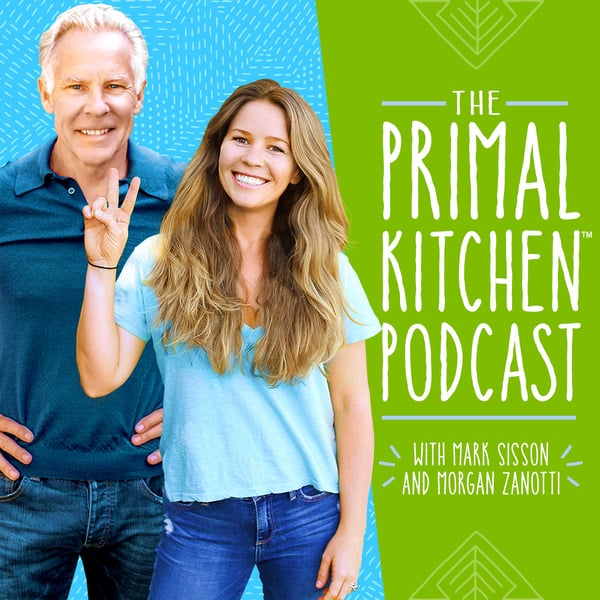Bitters: A Primal Primer
The Primal Kitchen Podcast
Mark Sisson & Morgan Zanotti
4.4 • 717 Ratings
🗓️ 7 November 2017
⏱️ 16 minutes
🧾️ Download transcript
Summary
I have a German friend who, after one of her fantastic meals, breaks out her Kräuter and fills aperitif glasses for everyone. To her it’s simply tradition. For the rest of us it’s a pleasant extension of her unmatched hospitality—and a welcome end to a heavy dinner.
Digestive bitters have been used for centuries as a highly effective way to boost digestive capacity, and naturally occurring digestive compounds in foods have been an integral part of our ancestral diets since day one. My friend says bitters are the secret to a hearty constitution. Knowing the science—and seeing her example, I’m unlikely to argue there.
(This Mark's Daily Apple article was written by Mark Sisson, and is narrated by Tina Leaman)
Transcript
Click on a timestamp to play from that location
| 0:00.0 | The following Mark's Daily Apple article was written by Mark Sisson, and is narrated by Tina Lehman. |
| 0:17.0 | Bitters, a primal primer. |
| 0:19.0 | I have a German friend who, after one of her fantastic meals, |
| 0:24.2 | breaks out her crowder and fills a pair of teeth glasses for everyone. To her, it's simply tradition. |
| 0:31.0 | For the rest of us, it's a pleasant extension of her unmatched hospitality and a welcome end to a heavy dinner. |
| 0:38.7 | Digestive bitters have been used for centuries as a highly effective way to boost digestive |
| 0:43.9 | capacity and naturally occurring digestive compounds in foods have been an integral part of our |
| 0:49.4 | ancestral diets since day one. My friend says bidders are the secret to a hearty constitution. |
| 0:56.1 | Knowing the science and seeing her example, I'm unlikely to argue there. And it's not just about |
| 1:01.9 | before or after dinner drinks. In fact, the crowd or aside, alcohol isn't the point at all. |
| 1:08.0 | We possess the ability to distinguish at least five different flavors from the foods we |
| 1:12.7 | eat, sweet, sour, salty, umami, and bitter. We tend to gravitate towards sweet or salty |
| 1:19.8 | flavors, but sour can be tasty. Umami, especially for a primal type, and German food, is a given. |
| 1:26.8 | But what about bitter? Most people avoid bitterness |
| 1:30.2 | and food like the plague. It even comes out in embodied phrasing like leaving a bitter taste in |
| 1:35.9 | one's mouth. But it hasn't always been that way. Setting the scene. Bitter taste receptors. |
| 1:43.7 | Let's first look at the diverse roles of T2Rs, bitter taste receptors, in the human body. |
| 1:50.0 | Initially, scientists knew about the existence of T2Rs and understood that their role was to |
| 1:55.6 | detect bitterness in the foods we wittingly eat or the compounds we unwittingly swallow. |
| 2:05.4 | But until recently, they didn't have the foggiest regarding exactly how those taste receptors were able to encourage more efficient digestion. |
| 2:09.3 | Thanks to research over the past 15 years or so, we now know that the bitter taste receptors |
| 2:14.3 | in our mouths release neurotransmitters that stimulate via the vagus |
... |
Transcript will be available on the free plan in -2702 days. Upgrade to see the full transcript now.
Disclaimer: The podcast and artwork embedded on this page are from Mark Sisson & Morgan Zanotti, and are the property of its owner and not affiliated with or endorsed by Tapesearch.
Generated transcripts are the property of Mark Sisson & Morgan Zanotti and are distributed freely under the Fair Use doctrine. Transcripts generated by Tapesearch are not guaranteed to be accurate.
Copyright © Tapesearch 2025.

